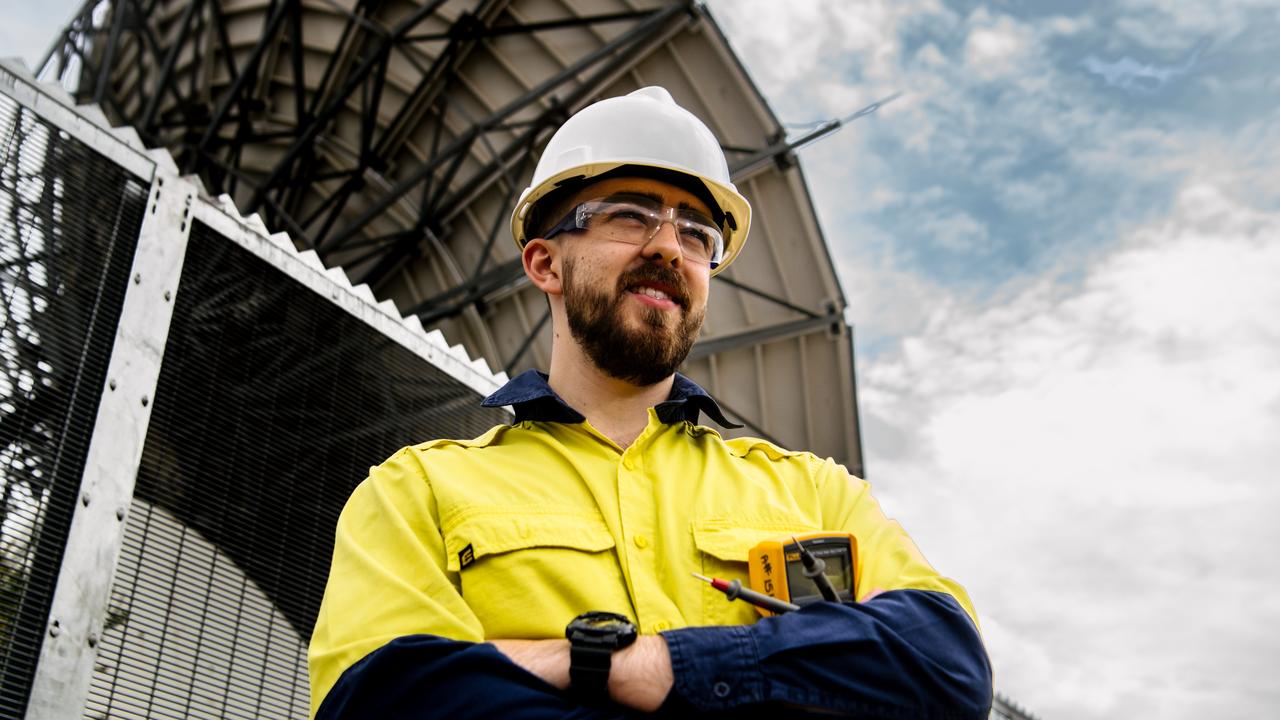OZ Minerals has looked to Silicon Valley in its quest to become a truly modern mining company
WHEN OZ Minerals managing director Andrew Cole is looking for inspiration about best practice in management and project delivery, he looks to Silicon Valley.

Jobs SA
Don't miss out on the headlines from Jobs SA. Followed categories will be added to My News.
WHEN OZ Minerals managing director Andrew Cole is looking for inspiration about best practice in management and project delivery, he’s just as likely to look to the best and brightest in Silicon Valley as the global mining companies operating in our backyard.
And when it comes to how to best deliver on the company’s mission, Mr Cole references a quote from Steve Jobs which he says underpins the company’s philosophy.
“It doesn’t make sense to hire smart people and tell them what to do,’’ Jobs said. “We hire smart people so they can tell us what to do.”
Mr Cole is a firm believer that, in general, “we under-utilise our people’’, and OZ is determined not to repeat that mistake.
OZ Minerals, which moved to Adelaide from Melbourne in late 2015, operates the Prominent Hill gold and copper mine near Coober Pedy and is in the process of developing the Carrapateena project, not far from the shores of Lake Torrens.
That $830 million underground project, if developed – which appears increasingly likely – is aiming for first copper production in the second half of 2019, with an operating life of more than 20 years.
The company’s approach to developing the latter project has been unconventional from a mining industry perspective, with significant work and expenditure already committed before a formal “decision to mine” has been made.
The company has already sunk a decline (mine shaft) 1450m into the earth, and has not been afraid to change tack, announcing in March that an idea put forward by one of its staff meant the company could sink two declines at the project for the same cost as one.
It was a relatively late stage change in direction for the project, which in an industry which likes a (literal) measured approach to development, could have been seen as risky or an admission that the first strategy was incorrect.
But Mr Cole and his team, having spent time with some of the world’s largest companies examining how they get the best out of their staff and manage change, has not shied away from making such decisions.
At the core of the philosophy is employees should see their role as “adding value”, and to do that they need to have the freedom to propose ideas and change the status quo.
“We spend a lot of time and money in recruitment processes trying to find people who will create value for your company, you bring them into your company and then you’ve got 5000 policies and procedures that tell them exactly what to do,” Mr Cole said.
“It’s not exactly empowering them to create and do wonderful things.
“We are trying to work out how you empower people to do great things. I think it’s quite a complex answer and there are a lot of things you have to do to get that right environment.’
The company has been working on creating that environment for the past two years or so, with Mr Cole saying getting rid of bureaucracy and arbitrary rules was key.
The company was also “increasing levels of expectation’’.
“Saying ‘your job here is to come up with ideas. Sitting back and being passive is not acceptable’.
“People are really stepping up . . . I think people find it really exciting when you do that.’’
In practical terms, the company has modelled some of its processes on what happens internally at online retailing giant Amazon, which OZ executives visited in Seattle.
“I've been reaching out to learn from a whole raft of different companies,’’ Mr Cole said.
“There are a couple of things we think Amazon do really well, they build an organisational culture that requires everybody in the business, and they’ve got hundreds of thousands of people, to innovate. And they do it really well.
“We’ve been working with Amazon now for a couple of years, they’re our strategic partner (for cloud and data services).
“When we started working with them we learned about how they functioned and were quite intrigued.’’
One idea borrowed from Amazon which has been vital for OZ was the adoption of what is called an Internal Press Release/FAQ - effectively a pitch which sets out the vision for a possible change or innovation at the business.
“A lot of time and energy goes into those couple of pages but it’s about visioning what success looks like.
“The value that it’s added is enormous. While it takes a lot of energy to write down what a project or an idea’s vision might look like, you get crystal clear definition of what success looks like and you get complete alignment.’’
The idea for the second decline came out of such a process.
The base case for the Carrapateena prefeasibility study involved one decline. But site manager Dion Alford presented a proposal which involved building two declines for the same price, but which improved the risk profile and gave the company a lot more flexibility in operating and maintenance.
“As a result of him thinking about that and building up the vision for it and building the business case ... that came up to this boardroom and we debated it, and we changed the scope.’’
Mr Cole said investors and those within the industry needed to learn to understand that such a change in strategy should not be seen as a mistake, but as a pivot.
“If you’re an Amazon and you made a change to a scope and said ‘we’re going to do something a bit different’, the stakeholder reaction is exactly the opposite, it’s ‘you beauty, what are they going to come up with?’”
“Innovation and change in a tech company is celebrated, innovation and change in a mining company is seen as negative and you’ve done something wrong.’’
Mr Cole said he believed this was because of the mining industry’s long history and belief in the way things “should be done” — an attitude which would not constrain OZ.
“We want to build the culture in this company where change is not just acceptable, but it’s encouraged.’’
New chairman, Rebecca McGrath, said the board was entirely supportive of the approach being taken by Mr Cole’s team.
“The board strongly supports the lean and agile approach being deployed by the company,’’ she told the company’s annual meeting in Adelaide this week.
“It drives a focus on the right levers and outcomes. The agile approach means the company can adapt quickly to opportunities as they present. being nimble will be critical in a rapidly evolving external environment.
“With this philosophy in place, you will not see OZ Minerals become a large, bureaucratic or head office-dominated organisation. You won’t see us make a decision on the basis that this is the way it has always been done.’’
The company has also developed what it has called an Early Contractor Involvement (ECI) model to develop Carrapateena, which, put simply, involves bringing in contractors early in the planning phase, so that any changes or alternative strategies can be decided early in the piece, in contrast to the traditional practice where the company sets the scope of a project early, and later changes can be difficult or costly.
Mr Cole said traditional tender processes “invariably do not allow change’’ locking in what might be, and often are, sub-optimal early choices.
That’s clearly an approach at odds with the mission explained by Mr Cole at the AGM this week, to build a “modern mining company” which was faster in its decision making and execution, open to change, and saw opportunities where other might see threats.
cameron.england@news.com.au



